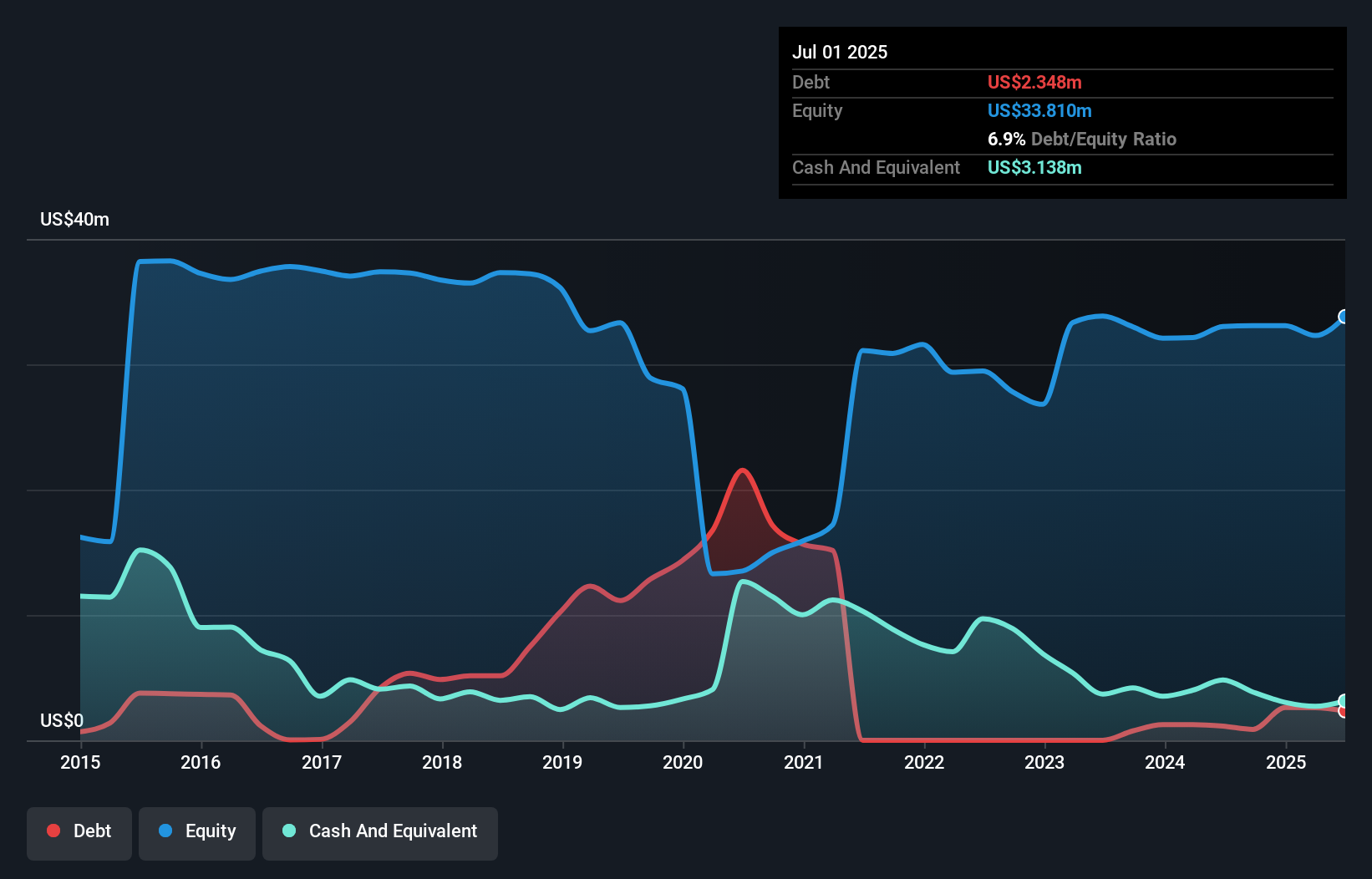Legendary fund manager Li Lu (who Charlie Munger backed) once said, 'The biggest investment risk is not the volatility of prices, but whether you will suffer a permanent loss of capital.' So it seems the smart money knows that debt - which is usually involved in bankruptcies - is a very important factor, when you assess how risky a company is. Importantly, Good Times Restaurants Inc. (NASDAQ:GTIM) does carry debt. But the real question is whether this debt is making the company risky.
When Is Debt Dangerous?
Debt and other liabilities become risky for a business when it cannot easily fulfill those obligations, either with free cash flow or by raising capital at an attractive price. In the worst case scenario, a company can go bankrupt if it cannot pay its creditors. However, a more frequent (but still costly) occurrence is where a company must issue shares at bargain-basement prices, permanently diluting shareholders, just to shore up its balance sheet. Having said that, the most common situation is where a company manages its debt reasonably well - and to its own advantage. The first thing to do when considering how much debt a business uses is to look at its cash and debt together.
What Is Good Times Restaurants's Debt?
As you can see below, at the end of July 2025, Good Times Restaurants had US$2.35m of debt, up from US$1.13m a year ago. Click the image for more detail. However, its balance sheet shows it holds US$3.14m in cash, so it actually has US$790.0k net cash.

How Healthy Is Good Times Restaurants' Balance Sheet?
Zooming in on the latest balance sheet data, we can see that Good Times Restaurants had liabilities of US$15.0m due within 12 months and liabilities of US$37.0m due beyond that. On the other hand, it had cash of US$3.14m and US$853.0k worth of receivables due within a year. So its liabilities outweigh the sum of its cash and (near-term) receivables by US$47.9m.
The deficiency here weighs heavily on the US$15.7m company itself, as if a child were struggling under the weight of an enormous back-pack full of books, his sports gear, and a trumpet. So we definitely think shareholders need to watch this one closely. At the end of the day, Good Times Restaurants would probably need a major re-capitalization if its creditors were to demand repayment. Given that Good Times Restaurants has more cash than debt, we're pretty confident it can handle its debt, despite the fact that it has a lot of liabilities in total.
Check out our latest analysis for Good Times Restaurants
We saw Good Times Restaurants grow its EBIT by 5.2% in the last twelve months. Whilst that hardly knocks our socks off it is a positive when it comes to debt. There's no doubt that we learn most about debt from the balance sheet. But you can't view debt in total isolation; since Good Times Restaurants will need earnings to service that debt. So if you're keen to discover more about its earnings, it might be worth checking out this graph of its long term earnings trend.
Finally, a company can only pay off debt with cold hard cash, not accounting profits. While Good Times Restaurants has net cash on its balance sheet, it's still worth taking a look at its ability to convert earnings before interest and tax (EBIT) to free cash flow, to help us understand how quickly it is building (or eroding) that cash balance. Over the most recent three years, Good Times Restaurants recorded free cash flow worth 63% of its EBIT, which is around normal, given free cash flow excludes interest and tax. This free cash flow puts the company in a good position to pay down debt, when appropriate.
Summing Up
Although Good Times Restaurants's balance sheet isn't particularly strong, due to the total liabilities, it is clearly positive to see that it has net cash of US$790.0k. So although we see some areas for improvement, we're not too worried about Good Times Restaurants's balance sheet. When analysing debt levels, the balance sheet is the obvious place to start. But ultimately, every company can contain risks that exist outside of the balance sheet. For instance, we've identified 2 warning signs for Good Times Restaurants that you should be aware of.
If you're interested in investing in businesses that can grow profits without the burden of debt, then check out this free list of growing businesses that have net cash on the balance sheet.
New: Manage All Your Stock Portfolios in One Place
We've created the ultimate portfolio companion for stock investors, and it's free.
• Connect an unlimited number of Portfolios and see your total in one currency
• Be alerted to new Warning Signs or Risks via email or mobile
• Track the Fair Value of your stocks
Have feedback on this article? Concerned about the content? Get in touch with us directly. Alternatively, email editorial-team (at) simplywallst.com.
This article by Simply Wall St is general in nature. We provide commentary based on historical data and analyst forecasts only using an unbiased methodology and our articles are not intended to be financial advice. It does not constitute a recommendation to buy or sell any stock, and does not take account of your objectives, or your financial situation. We aim to bring you long-term focused analysis driven by fundamental data. Note that our analysis may not factor in the latest price-sensitive company announcements or qualitative material. Simply Wall St has no position in any stocks mentioned.
About NasdaqCM:GTIM
Good Times Restaurants
Through its subsidiaries, engages in the restaurant business in the United States.
Adequate balance sheet with questionable track record.
Similar Companies
Market Insights
Community Narratives



